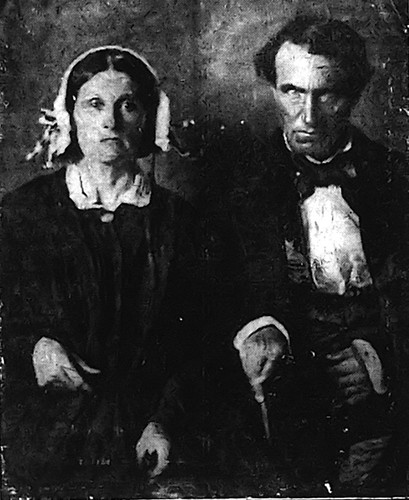The history of Joplin from the point of view of its black population has been difficult to trace. People are probably aware that Langston Hughes was born in Joplin, but his family left when he was still an infant. There was also the infamous lynching episode and subsequent flight of black citizens in 1903. But what about those who stayed, worked, raised their children, and died in Joplin? What were their lives like?
The earliest black inhabitants of southwest Missouri were, obviously, slaves belonging to the first white settlers. The 1850 slave schedule for Jasper County listed 212 slaves, including 3 belonging to John C. Cox, who later established the town of Joplin. There were 166 slaveholders registered in the county in 1861. Slaves were itemized on county probate records and deed transfers as well. It is heart-rending to read some of these documents. For instance, there is the account of an entire family (Sarah, Mary, Henry, Lewis, Susan, and Matilda) being sold for $1 and of three “copper-colored slaves” given to Arabella Sanders by her mother Margaret as a gift.
What happened to these people after they were freed? How did they earn a living? The 1870 census reveals the few occupations that were available to them–mill work, farm labor, and housekeeping. The mining boom, which put Joplin on the map in 1872, gave the freed slaves many more options. The 1880 census indicates that they held jobs in hotels, butcher shops, saloons, laundries, livery stables, in addition to doing farm and domestic work. They also worked in the mines. In fact, some were even mine owners! The Black Seven mine was owned by seven black men.
Joplin’s population grew from 9,943 in 1890 to 26,023 in 1900. Business was booming, and there was work for all. The 1900 census reveals an interesting trend. In addition to the previously noted occupations held by blacks, there were also more skilled professions listed–teacher, preacher, physician, barber, stone mason, plasterer, coachman, ice man, carpenter, taxi driver, grocer, upholsterer, and woolen mill, to name a few. But this trend did not last, probably due to the Great Depression and to the end of the mining era. In the 1937 Negro City and County Directory the majority of Joplin’s black citizenry were porters, domestic workers, and janitors. The only black-owned businesses were a dry cleaner, shoe shine parlor, barber shop, shoe repair shop, and a boarding house.
Speaking of 1937, the introduction to the Joplin city directory for that year, written by the Chamber of Commerce, enthuses that “The population is almost entirely white and almost entirely composed of intelligent, native stock, thereby eliminating the chief source of recurrent labor troubles.”
These are merely observations based upon a few historic documents. The black history of Joplin has yet to be written.
Leslie Simpson, an expert on Joplin history and architecture, is the director of the Post Memorial Art Reference Library, located within the Joplin Public Library. She is the author of From Lincoln Logs to Lego Blocks: How Joplin Was Built, Now and Then and Again: Joplin Historic Architecture. and Joplin: A Postcard History.


